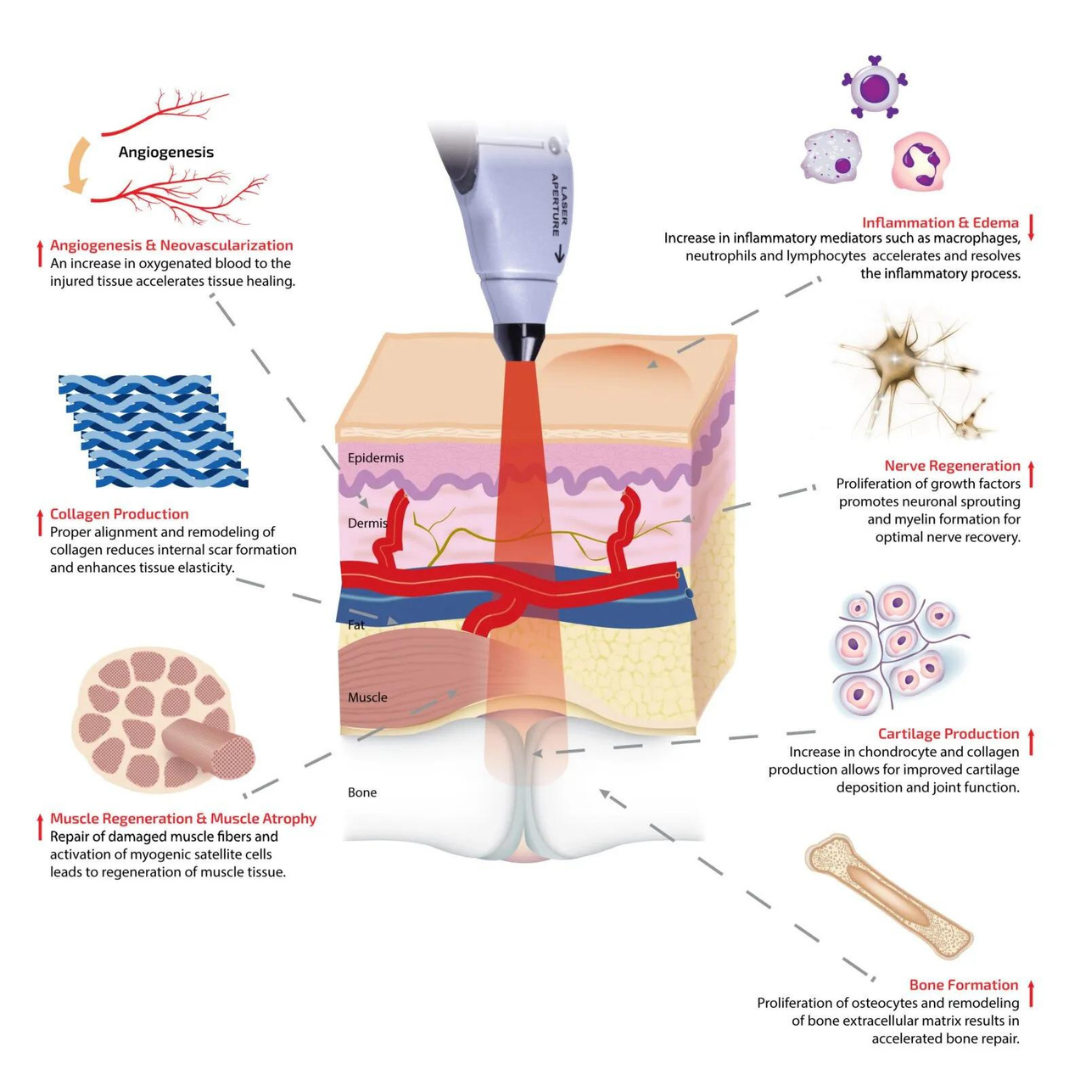Photobiomodulation, also known as Low-Level Light Therapy or Laser Therapy (LLLT) is a way to utilize light and it’s healing properties to accelerate healing. It is a pain-free, non-invasive therapy that can be used to treat a number of different conditions. This may sound far-fetched - “light healing” - but it’s true! The medical profession has used light therapy to help treat various conditions. For example, using phototherapy (literally meaning light therapy) to treat babies with jaundice, or UV Therapy to treat eczema. More recently, there are studies looking at using Light Therapy to treat people with alopecia and Alzheimer’s Disease. So it’s not as far-fetched as you may have thought.
The photobiomodulation that I do in the clinic uses a combination of different wavelengths to treat a patient. It uses Red LED (wavelength of 630-680 nm range) for more superficial layers and infrared (810-840 nm) to treat the deeper musculoskeletal layers. These two wavelengths prep the area so that the laser can penetrate deep into the areas that are needing treatment (eg, within the knee joint). After these two types of light, I use an infrared laser probe. This can penetrate the deepest and can reach the bony layers to promote healing.
Video from BIOFLEX
Image from BIOFLEX
The reason photobiomodulation works is because it reaches the mitochondria in the area being treated, and allows them to create more ATP. ATP is the energy currency of the cell, and it is used in every process in the body - including healing. When a tissue is injured, the mitochondira’s ability to make ATP is impaired, causing the area to take a longer period of time to heal. So helping the cell create more energy, accelerates that area’s ability to heal. As a result, photobiomodulation can help treat a number of different conditions including:
sciatica
arthritis
fractures
keloids
sprains and strains,
plantar fasciitis
nerve pain
joint pain
burns, etc.
Treatments are generally recommended to be 2-3 x week or more in acute cases. The number of treatments can vary depending on the patient and can vary from 1-30, with a minimum of 10-15 treatments being recommended. In most cases, there can be some change in symptomology after 3-5 treatments; however, this is not always the case. Acute problems generally respond faster than chronic problems, and each person is different, so this makes it difficult to predict how many treatments you may need. My goal will always be to minimize the length and number of treatments you need, but know that even with that, you will require multiple treatments (especially if a chronic condition flares). Be patient with yourself and the treatments.
To read more about the laser system and science behind photobiomodulation, click here.
~Dr. Charmagne


